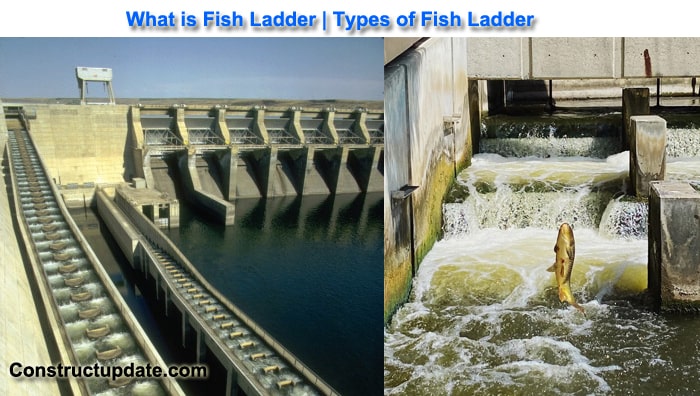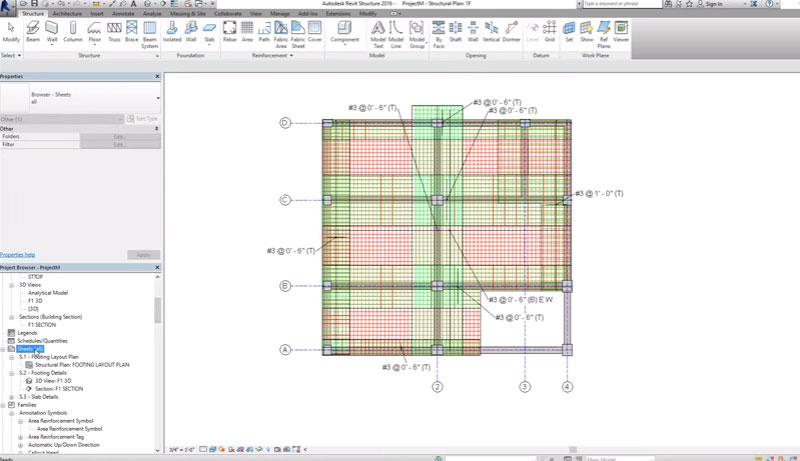What is Fish Ladder | Fish Pass Structure | Fish Steps Structure
What is a Fish Ladder / Fish Pass / Fish Steps?
A fish ladder, also known as a fishway, fish pass, or fish steps, is a structure built on or near artificial and natural barriers (such as dams, locks, and waterfalls) to aid diadromous fish migration and potamodromous species movement.
It is usually supplied alongside the baffle wall for the passage of fish, whereas rivers are an important supply of fish and include a wide variety of species.
The nature of the fish varies depending on the species, and the fish tend to migrate upstream in the winter and downstream in the monsoon, which is important for their existence.
Downstream migration is a trait of early life stages in anadromous fish like salmon, shad, and sturgeon, while upstream migration is a feature of adult life.
The opposite is true for catadromous fish, such as the North American eel.
Fish migration can be slowed or stopped by river impediments such as dams, culverts, and waterfalls.
Indeed, fish migration barriers are frequently blamed for the collapse of particular fish stocks.
A fish ladder serves as a detour for migrating fish to get around a river obstacle.
The general principle of all fish ladders is the same: the ladder contains a series of ascending pools that are reached by swimming against a current of water. Designs vary depending on the obstruction, river flow, and species of fish affected, but the general principle is the same for all fish ladders: the ladder contains a series of ascending pools that are reached by swimming against a stream of water.

Properties of Fish Ladder:
- It is typically found between the weir’s wall and the divider.
- Because there is always some water in the river part near the divider’s wall, this is advantageous.
- It’s made up of an inclined trough with holes, holes in it.
- Grooves gates are given on the top and bottom walls for good control.
- In the trough, these fish ladders must have a velocity of 3 m/s or less.
7 Types of Fish Ladder Structure / Fish Pass / Fish Steps Structure
1. Pool and Weir Fish Ladder
A pool and weir fishway, often known as a fish ladder, is a common fish pass structure. It is made up of a number of minor overflow weirs and regular-length pools. The pools are divided by overflow weirs and are designed in the shape of stairs.
In this situation, fish must jump from one pool to the next in order to reach the upstream. Fish ladders for pools and weirs are suited for all types of buildings, whether small or large. They do, however, necessitate a considerable amount of space to construct.
2. Pool and Orifice Fish Ladder
The only difference between this fish ladder and pool-and-wear fish ladders is the overflowed wear produced by a submerged hole inside its body.
As a result, rather than jumping upwards, the fish can go upwards by passing through each hole.
3. Vertical Slot Fish Ladder
A ladder pool and another type of weir fish can be found in these fish ladders.
The walls are replaced with vertical slots, in this case, allowing the fish to easily travel from pool to pool and upstream.
Multiple vertical slots are also available in some circumstances.
4. Baffle Fishway
Another type of fishway is the baffle fishway, which is a rectangular canal with a series of uniformly spaced baffles perpendicular to the flow direction. In general, unlike pool-type fish ladders, water flows continuously via baffle fishways without stopping, but pools can be supplied in between baffle walls if needed.
5. Rock Ramp Fishway
Large rocks and logs are used to construct rock ramp fishways.
A rock ramp is prepared straight over the obstruction over its width with some slope in this sort of fishway.
These big rocks form pools and falls in such a way that fish can easily pass through them.
Low-height weirs, short waterfalls, channel stability structures, and other barriers that are acceptable for rock ramp fishways include low-height weirs, short waterfalls, and channel stabilisation structures.
Creates lakes and minor falls that resemble natural structures using massive boulders and planks.
A rock ramp is prepared straight over the obstruction over its width with some slope in this sort of fishway.
6. Fish elevator
Fish elevators, also known as fish lifts, are a sort of fish elevator in which a chamber filled with water lifts the fish from the bottom to the top.
Fish lifts are ideal for lengthy barriers such as arch dams, high weirs, and so on.
This sort of fish elevator allows more fish to move through in a given amount of time.
Because of the smaller size openings and weak swimming ability of some larger species, they are unable to migrate upstream nearby.
7. Siphon Fishway
A fish syphon, also known as a syphon fishway, is a closed fish passageway that connects two bodies of water. The fish enters a syphon tube that is partially filled with water, and the flow rate is controlled by the syphon effect.
The fish syphon is laid with modest gradients and allows various sizes of animals to pass through it. During floods, the best time for fish to migrate is. The graphic below shows the openings inside the fish syphon.




